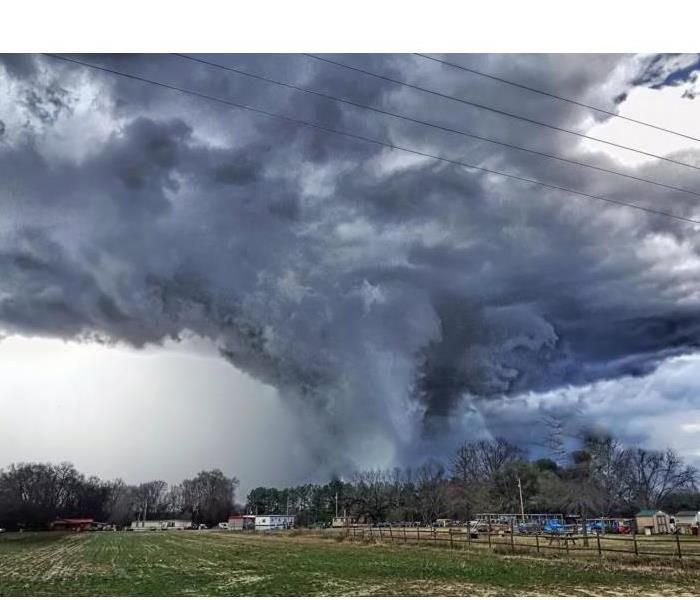Tornado Basics
10/23/2017 (Permalink)
 Strong winds also came with tornado warnings in Cheraw. Chris Jackson took this photo in Chesterfield County.
Strong winds also came with tornado warnings in Cheraw. Chris Jackson took this photo in Chesterfield County.
Tornado Basics
Tornadoes have caused a lot of destruction in many towns across the United States. South Carolina averages 14 tornadoes per year, resulting in an average of 1 fatalities. Counties in a high risk tornado area include Bamberg County, SC, Saluda County, SC and Richland County, SC. The largest tornado on record occurred on 04/08/1957, measuring a 4 on the Fujita-Pearson scale. Although, we cannot prevent a tornado, we can be more knowledgeable of what a tornado is and the signs of a tornado coming.
Tornadoes are considered nature’s most fierce storms and is formed from a violently narrow rotating column of air that extends from the base of a thunderstorm to the ground. Before a tornado hits, the wind may die down and the air may become very still. A tornadoes location may be marked by a cloud of debris even if the funnel is not visible.
Tornadoes may cause devastating fatalities and damage to many homes and neighborhoods in the matter of seconds.
According to the National Severe Storms Laboratory (NSSL), “About 1,200 tornadoes hit the U.S yearly.”
Tornadoes are most likely to be seen during May into early June for the Southern Plains and for the Northern plains and upper Midwest, tornadoes are more likely to be seen in June or July. Although, these are the peak tornado seasons, tornadoes can happen at any time of the year. Tornadoes can also happen at any time of the day or night, but are most likely to hit between 4-9 p.m.
Key Terms:
Tornado Watch: the conditions are favorable for a tornado.
Tornado Warning: a tornado has been reported, you should seek shelter.
Air Pressure: is the weight of a column of air that extends from the ground to the top of the atmosphere.
Funnel Cloud: a rotating column of wind that has not touched the ground (funnel clouds are called tornadoes when they reach the ground).
Multi-Vortex Tornado: a tornado that has two or more vortices that circle the center of a larger tornado.
Tornado Alley: an area in the United States where tornadoes are more likely to develop.
For more information on tornado safety and what to do in case of a tornado please visit https://www.weather.gov/ctp/TornadoSafety .



 24/7 Emergency Service
24/7 Emergency Service